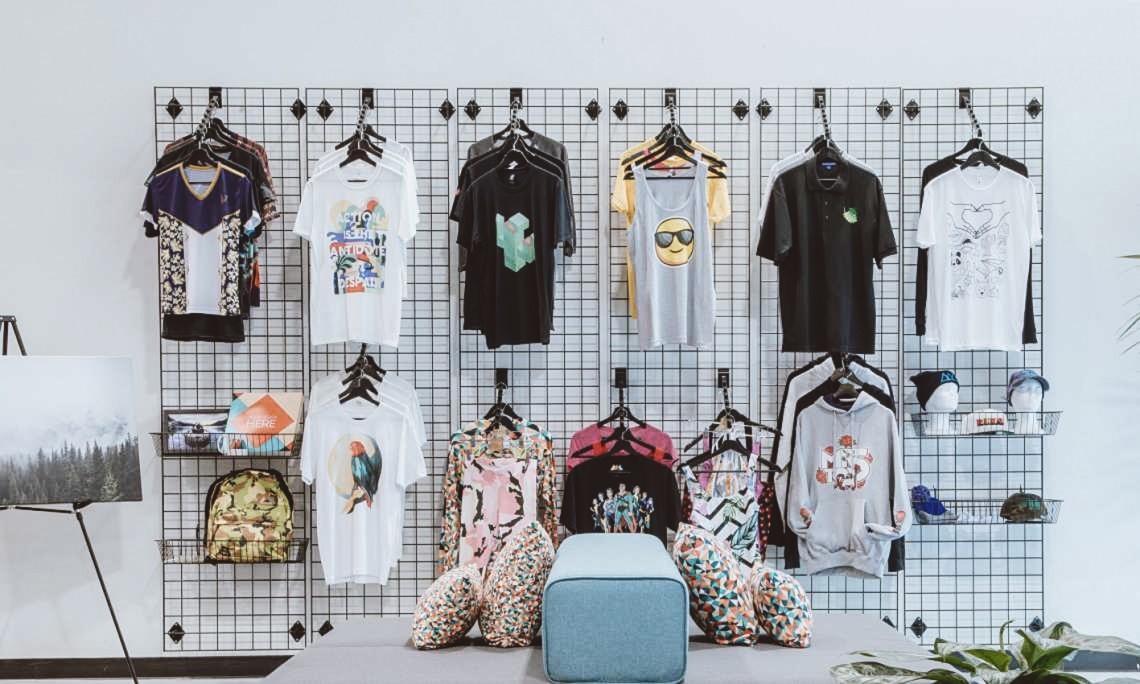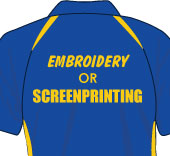Some Of Tx Tees
Some Of Tx Tees
Blog Article
Little Known Facts About Tx Tees.
Table of ContentsGet This Report about Tx TeesThe Buzz on Tx TeesGet This Report about Tx TeesThe Main Principles Of Tx Tees 8 Simple Techniques For Tx TeesThe 10-Minute Rule for Tx TeesTx Tees Can Be Fun For Everyone
That brings your overall to about $1,900 gross and shipping. Build up various other costs, like the variety of energies it takes to run the store and the price of ink and emulsion per design. custom t-shirt design. Take the print listed below for instance. This is a one-color photo, so the expense of ink per tee shirt is roughly 20 cents.The emulsion ought to only be a few cents considering that you 'd only need to coat one screen for this job. Typically, printers attempt to make up to 45% revenue on a print task.

With DTF, you can print a handful of tee shirts, or just one. Use the same calculator as the area above to determine exactly how much profit you would certainly make utilizing DTF transfers. Contrast the expenses and revenues to whichever method speaks ideal to your arrangement and procedure. Both display printing and DTF have their specific niches on the planet.
The Main Principles Of Tx Tees
The very best means to know? Ask about and see what print stores like yours are doing. custom cap printing. Try both out and see which you like much better
When you're choosing what kind of printing method to utilize for printing your art work styles on your garments, it's essential that you understand the distinctions in between these two methods so you can make best use of outcomes while reducing expenses. Display printing is one of the most generally used method for publishing layouts on fabrics.
DTG printing is additionally called area or straight to garment printing due to the fact that it publishes just what is required as opposed to making a display as display printers do. https://www.ted.com/profiles/46526166. Display printing works by screen filler squeegee display printing ink screen mesh screen, after that moving the photo to garment making use of heat and/or stress
The DTG printer utilizes special dye-sublimation inks that are applied into a pre-designed picture by a digital printing system. The inks enter into the material, allowing for vivid colors and extraordinary information. It's likewise understood as place or direct to garment printing since it prints just what is needed as opposed to making a screen as display printers do.
The Best Strategy To Use For Tx Tees
It's much faster - you can print a fullcolor image in mins, as opposed to hours for screen printing. Second, there's no established up time or prices entailed - you can publish any design you like, without having to produce a screen first. Third, there's no waste - since screen printers screen print one style each time, they need to evaluate each shade independently.
The paper is really expensive and can only be used once. Once it's printed on, it needs to be thrown out. - The first acquisition rate is reduced than the in advance financial investment of DTG printers- You can publish multi-color layouts one screen at a time instead of having to publish each shade independently like DTG printing.

The Buzz on Tx Tees
Nevertheless, as opposed to using screen mesh as display printers do, dye sublimation printers make use of laser technology to move your photos onto garments or paper. A heat process transfers the color from its solid-state straight into the gas phase which consequently fuses it onto fabric substrates when they are quickly warmed to heats under high pressure.
Sublimation printing is eco-friendly. It utilizes much less water than screenprinting, and due to the fact that it doesn't involve making use of hazardous solvents, it's risk-free for all sorts of apparel. The dye sublimation inks are likewise odor-free when healed, unlike display printers that utilize harmful chemicals during the screen printing process that leave behind an undesirable odor.
They likewise conserve cash on costly devices like direct exposure units because dye sublimation printers do not call for a UV exposure device or a flash cure oven that is commonly used in screen printing (screen printing shop). What is straight to garment printing (DTG Printing)? DTG printing is an electronic screenprinting procedure that publishes directly onto fabric utilizing specialized inkjet printers
The Greatest Guide To Tx Tees
DTG printing supplies lots of benefits over traditional screenprinting, including the capacity to print photographic quality pictures, greater color vibrancy, and the capacity to print layouts on darker materials. DTG printers work by warming the textile ink until it becomes a gas. The gas then penetrates the material, bonding with the fibers to develop a long-term print.

Display check over here printers just prepare their display after that begin printing until they run out of product or ink.- There is a vast variety of skilled screen printers all over the world, which can be valuable for novices. - It's a slower process - screen printers often have to wait for the ink to dry prior to they can publish the next shade- Display printers require manual work, so there's a greater learning contour and it takes longer to create a high-quality layout- Display printing isn't as precise as DTG printing, so you may obtain some "blood loss" of colors from one part of the photo onto an additional if not done properly.
All about Tx Tees
Instead of making use of screen mesh as display printers do, color sublimation printers utilize laser innovation to move your pictures onto garments or paper. A heat procedure moves the color from its solid-state directly right into the gas phase which consequently fuses it onto textile substrates when they are rapidly heated up to high temperature levels under high pressure.
Sublimation printing is eco-friendly. It makes use of less water than screenprinting, and due to the fact that it doesn't include using damaging solvents, it's secure for all sorts of garments. The color sublimation inks are also odor-free when healed, unlike screen printers that make use of hazardous chemicals throughout the display printing procedure that leave behind an undesirable smell.
They also save money on pricey tools like exposure systems given that color sublimation printers don't require a UV exposure system or a flash treatment stove that is generally utilized in screen printing. What is direct to garment printing (DTG Printing)? DTG printing is a digital screenprinting process that prints directly onto fabric using specialized inkjet printers.
Tx Tees Can Be Fun For Anyone
DTG printing offers several advantages over typical screenprinting, including the capacity to publish photo quality photos, greater color vibrancy, and the capability to publish layouts on darker materials. DTG printers function by heating up the fabric ink until it develops into a gas. The gas then permeates the textile, bonding with the fibers to produce a long-term print.
Report this page